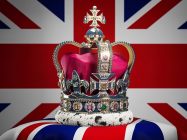 After the death of Queen Elizabeth II, every aspect of the next two weeks was meticulously planned and practiced and even received the monarch’s personal approval.
After the death of Queen Elizabeth II, every aspect of the next two weeks was meticulously planned and practiced and even received the monarch’s personal approval.
For many years, the several organizations involved—from central and local government departments to military and religious authorities and representatives of the other 14 nations where she was also head of state—have met regularly.
On all British public buildings, the Union Flag will fly low. Since the monarch never passes away, the Royal Standard, their personal flag, is never lowered.
Here is what we currently know, even though many details are still under wraps.
The new monarch after the death of Queen Elizabeth II
After the death of Queen Elizabeth II, her son Prince Charles ascended to the throne automatically. King Charles III will be his formal title.
He currently serves as the head of state of 14 Commonwealth nations, including Australia, Canada, and the UK. Despite not being a hereditary position, he will also lead the 56-member Commonwealth after the organization’s leaders consented to his succession at a gathering in London in 2018.
In addition to being the Supreme Governor of the Church of England, he now serves as the leader of the British Armed Forces, the courts, and the civil service. As the Fount of Honor, he will be recognized by having knighthoods bestowed in his name.
Title changes and gun salutes
The Accession Council will gather at London’s 500-year-old St. James’s Palace as one of the first formalities. The official announcement of the sovereign’s passing and proclamation of the new one occurs in the first section. Hundreds of dignitaries and Privy Council members are present at this closed gathering.
The Garter King of Arms will read out the Proclamation from the palace’s balcony, and gun salutes will resound throughout the city. There will be follow-up proclamations at the Royal Exchange in the financial area and the major cities of Edinburgh, Cardiff, and Belfast. As the Garter King of Arms reads the proclamations, the flags will return to flying whole staff.
The King and other senior royals attend the second session of the Accession Council. Everybody will be able to see this ancient tradition because it will show on live television for the first time in history.
Prince William, Kate and Camilla’s titles
The title of Duke of Cornwall and the associated income have been passed down to Prince William from his father, who is now first in line to the throne. His wife, Kate, has assumed the title of Duchess of Cornwall in place of Camilla, who officially becomes Queen now that he is independently wealthy. King Charles III will then take a series of vows and swear loyalty to the Church of Scotland as the rest of the world watches.
Then, condolence books will be available at St. James’s Palace and other locations. He will return to Buckingham Palace after the Accession Council to hold discussions with the church and political figures before retiring.
A broadcast by the new King will play out in the 24 hours following the announcement of the Queen’s death, and there will be cannon salutes throughout London, one round for each year of Queen Elizabeth’s life. The royal family won’t be present for a service that will take place at St. Paul’s Cathedral in the coming days. The public should use this opportunity to remember their Queen. Expect to see local services spread around the nation. The Queen ruled the Church of England with supreme authority.
The bells of Westminster Abbey, St. Paul’s, and Windsor Castle will ring during the next few days.
Funeral preparations for Queen Elizabeth II
The government will fund the state burial because Queen Elizabeth is the monarch. These details will be public in the upcoming days. In the following days, there will be plans in place to convey the Queen back to England after she passed away at Balmoral Castle, where she resided in Scotland.
Even if Elizabeth may have given her own funeral arrangements the go-ahead after her death, only the queen or king in power can do so. King Charles III will carry out that responsibility in a meeting with the Earl Marshal, who oversees ceremonial events. Given that he has already viewed the blueprints and may have made modifications as part of the planning process, we may presume he will grant the go-ahead.
The Lord Chamberlain’s Committee, which is in charge of managing the Royal Household, was to convene as the last item of business on the day of the death to esure everything was ready for the upcoming two weeks. That included the state funeral in Westminster and the interment in Windsor.
The oldest section of the Palace of Westminster, which houses the UK parliament, is Westminster Hall, where former kings and queens have laid in state. The Sovereign’s Bodyguard, Foot Guards, or Household Cavalry Mounted Regiment provided round-the-clock security over their coffin, lying on an elevated platform in the center of the hall.
Burial Preparations for other royal family members
High-ranking military members of the British royal family, the sovereign’s consort, and the heir apparent receive formal royal burial instead.
The royal ceremonial burial for Prince Philip, the Queen’s husband of more than 70 years and the longest-serving consort in British history, took place in April 2021 at St. George’s Chapel in Windsor, west of London. Thirty was the maximum number of immediate family members and friends who could attend due to restrictions imposed by the coronavirus epidemic.
Philip ensured that his burial service reflected his military background and personal interests in every aspect of the planning. Although the funeral procession and service showed on live TV, crowds could not congregate at Windsor or other royal homes.
All other royal family members, including their children and spouses, typically get a special royal ceremony.










